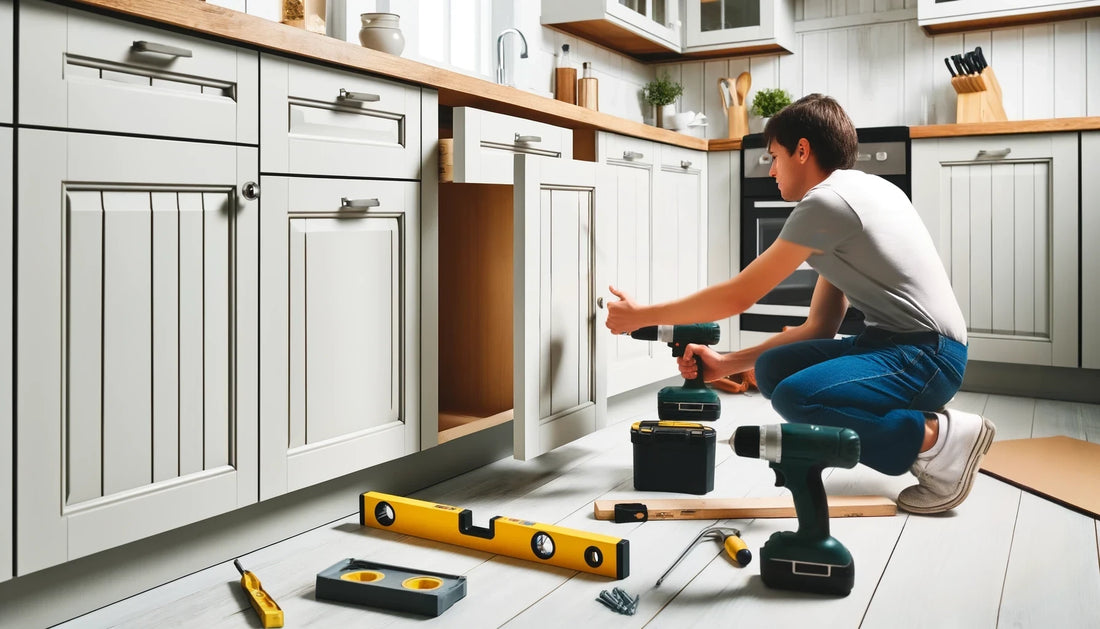
DIY Guide: Installing Your New Cabinet Doors and Drawer Fronts
Share
Installing your own cabinet doors and drawer fronts can be a rewarding DIY project that saves you money and gives you a sense of accomplishment. Follow this step-by-step guide to ensure a professional-looking installation.
Tools and Materials You’ll Need
- Measuring tape
- Pencil
- Screwdriver or drill
- Level
- Cabinet hinges
- Screws
- Cabinet doors and drawer fronts
- Soft-close hinges (optional)
- Glass inserts (optional)
1. Measure and Prepare
Accurate measurements are crucial for a successful installation. Measure the width and height of each cabinet opening. If you’re installing overlay doors, add the desired overlay to these dimensions.
For example, if your cabinet opening is 12" wide by 24" high and you want a 1/2" overlay, the door size will be 13" x 25".
2. Remove Old Doors and Drawer Fronts
Use a screwdriver or drill to remove the existing cabinet doors and drawer fronts. Save the screws and hinges if they’re still in good condition and compatible with your new doors.
3. Install the Hinges
Attach the hinges to the new cabinet doors. If you’ve opted for soft-close hinges, follow the manufacturer’s instructions for installation. Position the hinges so they align with the hinge locations on your cabinet frame.
For pre-bored hinge holes, simply insert the hinges and secure them with screws. If your doors aren’t pre-bored, you’ll need to mark and drill the holes yourself.
4. Hang the Cabinet Doors
Hold the cabinet door in place and use a level to ensure it’s straight. Secure the hinges to the cabinet frame with screws. It might be helpful to have a second person hold the door while you attach the hinges.
Adjust the hinges as needed to ensure the doors hang evenly and close properly.
5. Attach the Drawer Fronts
Align the drawer fronts with the drawer boxes and secure them with screws from the inside. Make sure the drawer fronts are centered and level. If your drawer fronts have pre-drilled holes, this step will be much easier.
6. Add Finishing Touches
If you’ve chosen to install glass inserts, now is the time to add them. Follow the manufacturer’s instructions for installation. Additionally, consider adding cabinet hardware, like knobs or pulls, to complete the look.
7. Check for Alignment and Functionality
Once all doors and drawer fronts are installed, check for proper alignment. Adjust the hinges and drawer fronts as needed to ensure everything opens and closes smoothly.
Tips for a Professional Finish
- Use Quality Hinges: Investing in high-quality hinges, such as our Salice 1-3/8" Overlay Soft Close 106 degree, can make a significant difference in the longevity and functionality of your cabinets.
- Opt for Pre-Bored Doors: If you’re not comfortable drilling hinge holes yourself, consider purchasing pre-bored doors like our Classic Shaker Door - Paint Grade or Madison Shaker Door - Paint Grade.
- Measure Twice, Cut Once: Always double-check your measurements before cutting or drilling to avoid costly mistakes.
Conclusion
Installing your own cabinet doors and drawer fronts can be a satisfying DIY project that enhances the look of your home. With the right tools, materials, and a bit of patience, you can achieve a professional finish./p>
